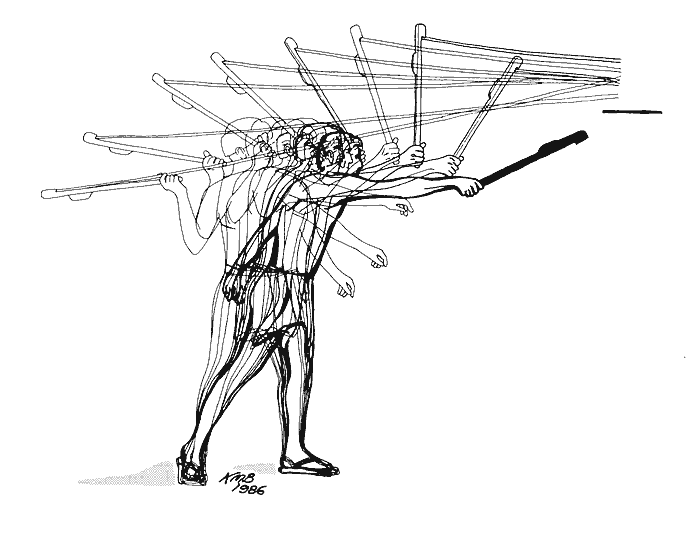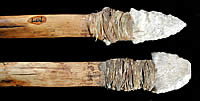Can You Say Atlatl?

One of the oldest known hunting devices was a short stick with a funny-sounding name. The atlatl (pronounced at-lát-till, or á-till-lattil) is a spear-thrower, a stick about two feet or so in length made of wood. It functioned as a lever that gave the hunter's throw more power and distance.
A small prong or hook at one end of the stick held a lightweight throwing spear or dart in place on the atlatl until it was released by a powerful overhead swing of the arm. Hurled to its target, the dart—tipped with a chipped-stone point—would penetrate the animal, wounding or killing it.
The darts were often made in two parts: a long main shaft made of hollow cane, and a short foreshaft made of hardwood. The flint dart point (often called a spear point or, mistakenly, an arrowhead) was tightly fastened to the "business" end of the foreshaft with animal sinew (the elastic tendon attached to muscles). The other end of the foreshaft fit snugly into the end of the hollow main shaft.

Although simple in design, the atlatl was a very effective weapon. Because it extends the length of the human arm by about 18 inches, it allowed a hunter to throw a dart much farther-the length of a football field-than he could without it and with the force necessary to bring down large game. When Spanish soldiers entered what today is Mexico, they encountered Aztec warriors with atlatls (the funny-sounding name comes from the Aztec's language). The soldiers soon learned the hard way that darts hurled from atlatls could penetrate their metal armor!

The atlatl is a very ancient weapon—no one really knows how old, but it was in use in the Old World at least 20,000 years ago. It is likely that the earliest people to enter the New World brought it with them.

